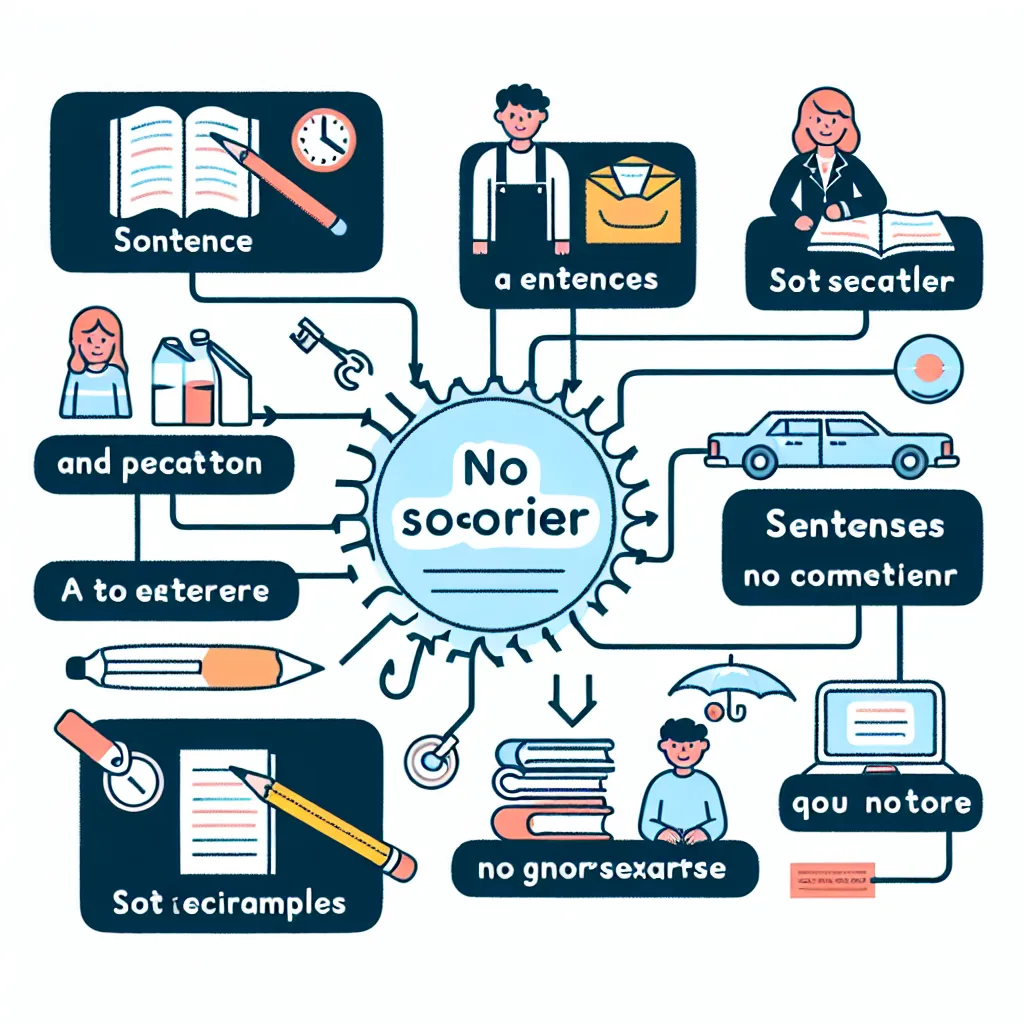The phrase “no sooner” is a sophisticated grammatical structure that can significantly enhance your IELTS score when used correctly. This advanced construction is particularly valuable in the Writing and Speaking sections, where demonstrating a wide range of complex language is crucial. Let’s delve into the intricacies of using “no sooner” and explore how it can elevate your IELTS performance.
Understanding the “No Sooner” Structure
The “no sooner” structure is used to express that one action happened immediately after another. It emphasizes the quick succession of events and adds a level of sophistication to your language use. This structure is particularly useful in IELTS Task 2 essays and Speaking Part 2 monologues where you need to describe sequences of events.
Formula: No sooner + had + subject + past participle + than + subject + past simple

Examples in IELTS Context:
-
Writing Task 2 (Essay): No sooner had the government implemented the new environmental policy than they realized its positive impact on air quality.
-
Speaking Part 2 (Describing an event): No sooner had I arrived at the conference than I bumped into an old colleague.
-
Writing Task 1 (Graph description): No sooner had the company launched its new product than sales skyrocketed.
-
Speaking Part 3 (Discussion): No sooner had we adopted the new technology than we saw a significant improvement in productivity.
-
Writing Task 2 (Opinion essay): No sooner had scientists discovered the potential of renewable energy than skeptics began to question its viability.
In each of these examples, notice how the structure emphasizes the rapid sequence of events, adding sophistication to the language used.
Applying “No Sooner” in IELTS Writing
Using the “no sooner” structure effectively in your IELTS Writing tasks can demonstrate your command of complex grammar, potentially boosting your score in the Grammatical Range and Accuracy criterion.
Task 2 Essay Example:
Topic: Discuss the impact of social media on modern communication.
Sample paragraph:
No sooner had social media platforms become widespread than traditional forms of communication began to decline. This rapid shift in communication methods has had profound effects on society. For instance, no sooner had Facebook gained popularity among younger users than it started to influence their social interactions and relationships. This change has led to both positive and negative consequences, such as increased connectivity but also reduced face-to-face interactions.
Analysis: In this paragraph, the “no sooner” structure is used twice to emphasize the quick impact of social media on communication patterns. This sophisticated use of grammar demonstrates a high level of language proficiency, which is likely to impress IELTS examiners.
Incorporating “No Sooner” in IELTS Speaking
In the Speaking test, using “no sooner” can showcase your ability to use advanced grammatical structures spontaneously, potentially increasing your score in the Grammatical Range criterion.
Speaking Part 2 Example:
Topic: Describe a time when you had to make a quick decision.
Sample response:
“I remember a situation at work where I had to make a split-second decision. No sooner had I arrived at the office than my manager informed me about a critical client meeting in 30 minutes. I hadn’t prepared anything, but I quickly gathered my thoughts and relevant data. No sooner had I entered the meeting room than I realized I’d made the right choice to attend unprepared rather than miss the opportunity…”
Analysis: Here, the speaker uses the “no sooner” structure twice to emphasize the urgency of the situation and the quick succession of events. This demonstrates a high level of grammatical control and sophistication in spontaneous speech.
Tips for Achieving Higher Band Scores
To maximize your IELTS score when using the “no sooner” structure:
-
Use it sparingly: While it’s impressive, overuse can seem unnatural. Aim to use it once or twice in your essay or speaking response.
-
Ensure accuracy: The structure must be grammatically perfect to be effective. Practice until you can use it confidently.
-
Context is key: Use “no sooner” in situations where emphasizing the rapid sequence of events adds value to your response.
-
Combine with other advanced structures: Mix “no sooner” with other complex grammatical forms to showcase your range.
-
Practice in context: Incorporate this structure into practice essays and speaking responses on various IELTS topics.
Common Mistakes to Avoid
Be aware of these common errors when using the “no sooner” structure:
-
Incorrect word order:
- Incorrect: No sooner I had arrived than…
- Correct: No sooner had I arrived than…
-
Using ‘when’ instead of ‘than’:
- Incorrect: No sooner had I arrived when…
- Correct: No sooner had I arrived than…
-
Forgetting ‘had’:
- Incorrect: No sooner I arrived than…
- Correct: No sooner had I arrived than…
-
Using the wrong tense after ‘than’:
- Incorrect: No sooner had I arrived than I have seen…
- Correct: No sooner had I arrived than I saw…
-
Overcomplicating the structure:
- Incorrect: No sooner had I been arriving than…
- Correct: No sooner had I arrived than…
Conclusion
Mastering the “no sooner” structure can significantly enhance your IELTS performance, particularly in the Writing and Speaking sections. By using this sophisticated grammatical form correctly, you demonstrate a high level of English proficiency, potentially boosting your scores in Grammatical Range and Accuracy. Remember to practice using this structure in various contexts and combine it with other advanced language features to showcase your linguistic abilities fully. As you prepare for your IELTS exam, consider incorporating “no sooner” into your responses on topics such as technological advancements, historical events, or personal experiences to add depth and sophistication to your language use.